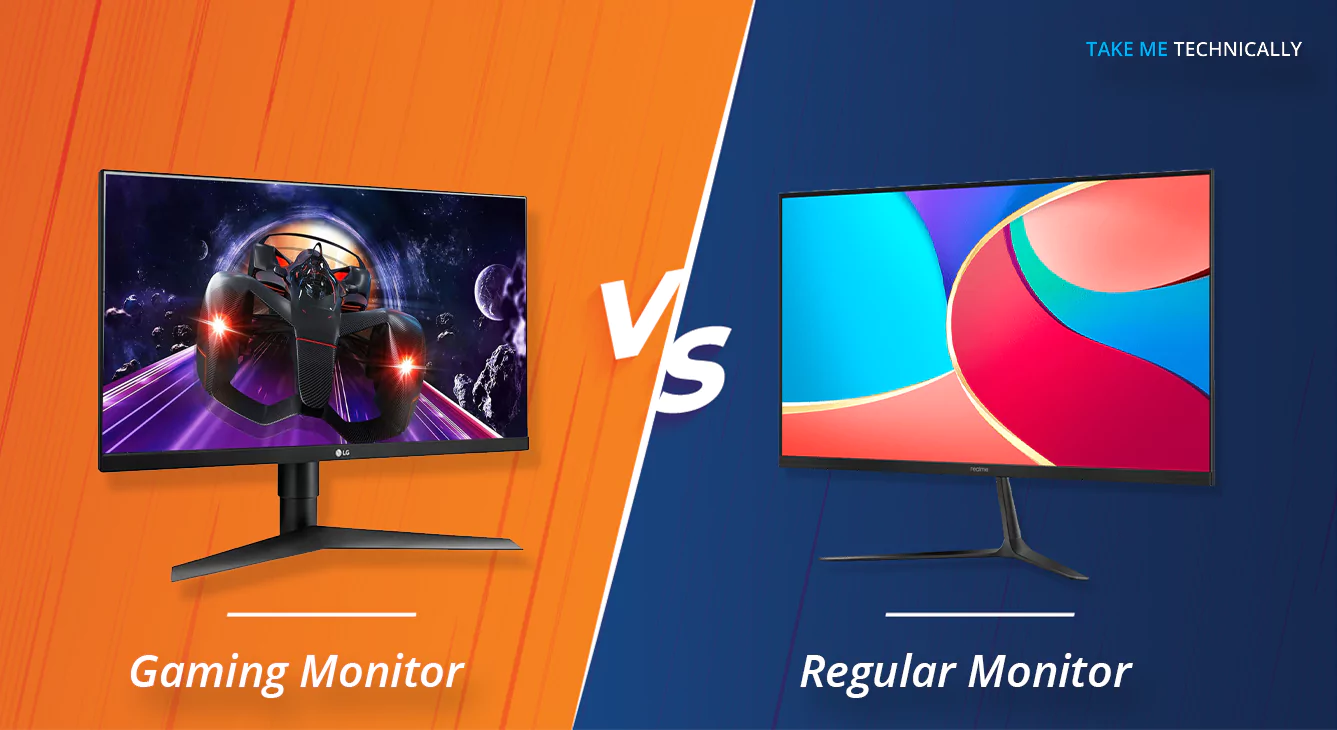
At first glance, gaming monitors and regular monitors might appear identical. Both can either stand on a desk or be mounted on a wall. However, despite their similar appearances, they differ significantly in configuration. This is particularly evident when considering that professional users often choose specialized monitors tailored to their activities. Let’s explore the differences between gaming and regular monitors.
Gaming Monitor vs Regular Monitor
Gaming Monitor: A Gaming Monitor boasts superior specifications in every aspect. Such a monitor typically offers a higher refresh rate, a faster response time, IPS Panel, sRGB, HDR, and a smudge-free display, among other advanced features.
Gamers often prioritize monitors that provide at least a 144 Hz refresh rate and a 1 ms response time. They also look for specific panel types like IPS, VA, or TN. On the other hand, a regular monitor is commonly used for office tasks, personal computing, and CCTV surveillance.
Regular Monitor: So, what exactly is a regular monitor? It’s a monitor primarily purchased for office tasks, personal computing, and surveillance. It can be connected to a variety of devices, including laptops and desktop computers.
Regular monitors usually have a lower refresh rate compared to gaming monitors and a longer response time. An exemplary regular monitor might perform optimally at a 65 Hz refresh rate and a 5 ms response time. Depending on your budget, you can opt for a VA, IPS, or TN panel.
Difference Between Gaming and Regular Monitors
There are several critical distinctions between gaming and standard monitors that assist in determining which is most suitable for a specific task. It’s unrealistic to expect an office monitor to perform at the level of a professional gaming monitor. Below are some of the fundamental differences between gaming and office monitors that you may not be aware of:
Responsiveness
Gaming monitors typically offer a faster response time and higher refresh rates than standard monitors. Such enhanced responsiveness is vital for an optimal gameplay experience, especially in fast-paced games where swift movements are required.
Panel Type
One of the primary differentiators between gaming and regular monitors is the type of panel they use. Gaming monitors often utilize IPS panels, as they provide superior performance, delivering faster speeds and quicker response times. In contrast, regular or office monitors might use TN or VA panels, which can sometimes result in perceptible lag or slower response times during intensive tasks.
Resolution
Interestingly, this is one area where gaming monitors might sometimes lag behind TVs or regular monitors. While gaming monitors prioritize speed and responsiveness, they don’t always come with the highest resolution. Office monitors, on the other hand, often require higher resolutions to display detailed graphics and text crisply. Although gaming monitors may have some limitations in terms of graphic and color reproduction, they compensate by being faster and delivering a smoother gaming experience. Regular displays, especially TVs, might offer higher resolutions for static images. However, they typically struggle to render video games at high refresh rates, like 175 Hz, without experiencing frame rate latency.
We Recommend these Gaming and Regular Monitor
Gaming Monitor
Regular Monitor
Samsung M5 27 FHD 1080p Smart Monitor




